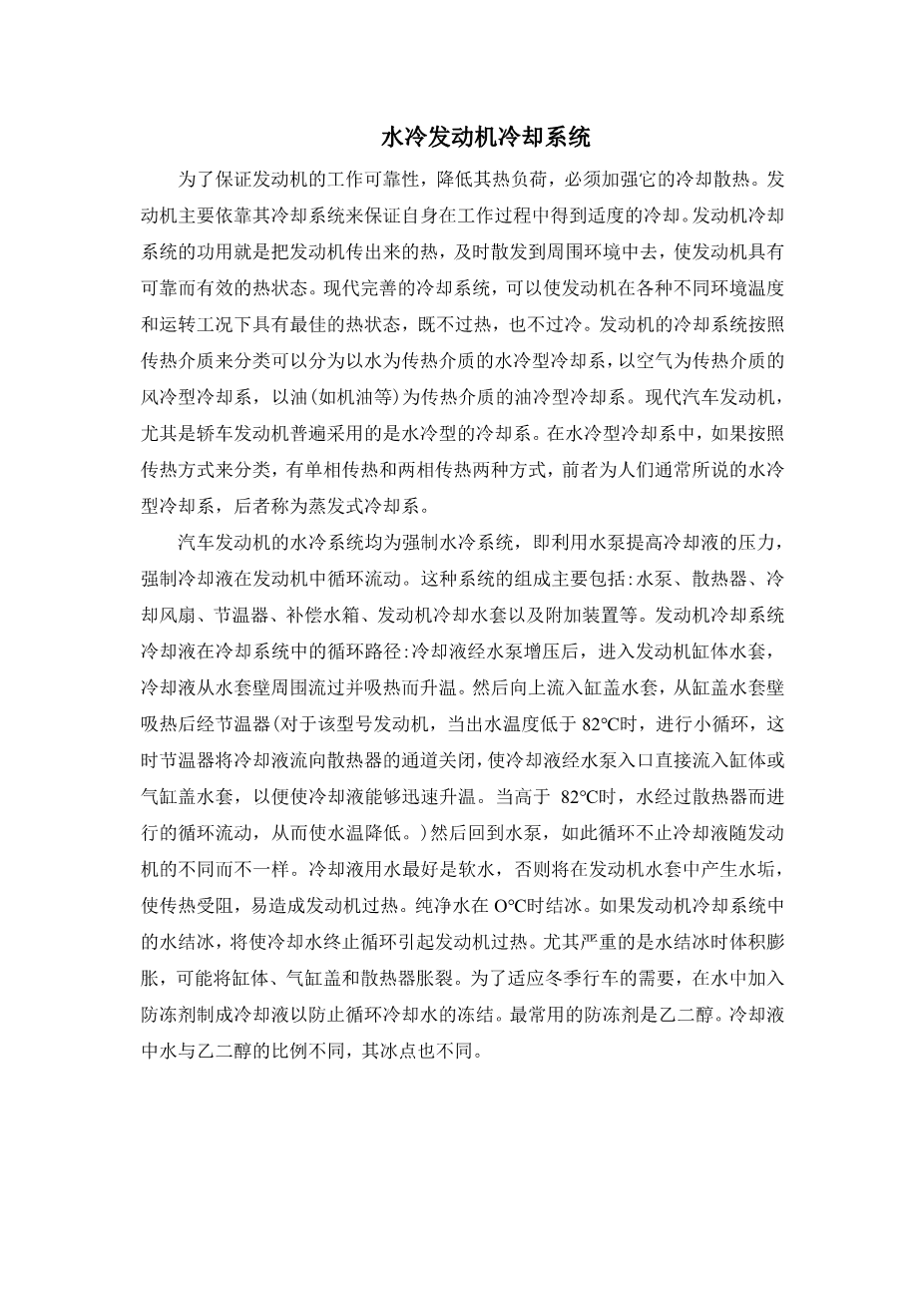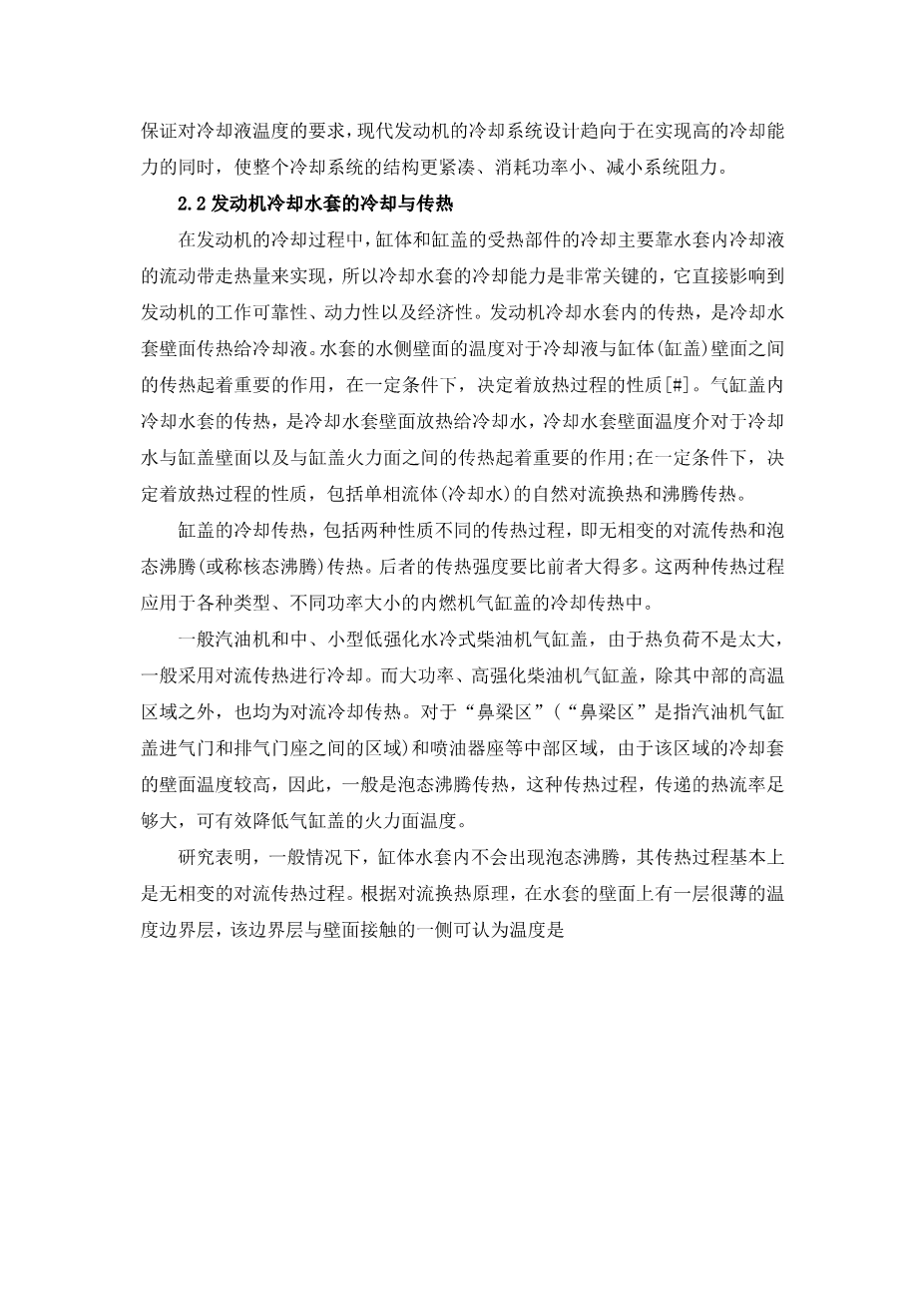Water cooled engine cooling system
In order to ensure the reliability of the engine, reduce its heat load, must strengthen its cooling and cooling. The engine relies mainly on its cooling system to ensure that its own work in the process of moderate cooling. Engine cooling system is the function of the heat coming out of the engine, timely dissemination to the surrounding environment, the engine has a reliable and effective thermal state. A modern and sophisticated cooling system allows the engine to be optimally heated in a wide range of ambient temperatures and operating conditions, neither overheating nor overcooling. Engine cooling system in accordance with the heat transfer medium can be divided into water as the heat transfer medium of water-cooled cooling system to air as the heat transfer medium of the air-cooled cooling system to oil (such as oil, etc.) as the heat transfer medium Oil-cooled cooling system [z] [23] [32]. Modern automotive engine, especially the car engine is commonly used in water-cooled type of cooling system. In the water-cooled cooling system, if classified according to the heat transfer mode, there are two types of single-phase heat transfer and two-phase heat transfer, the former is commonly referred to as water-cooled cooling system, the latter known as the evaporative cooling system.
The water cooling system of the automobile engine is a forced water cooling system, that is, the use of water pump to improve the cooling fluid pressure, forced cooling fluid circulation in the engine. The main components of this system include: pumps, radiators, cooling fans, thermostats, compensation tank, engine cooling water jacket and additional devices. Engine cooling system cooling fluid circulation path in the cooling system: the cooling fluid pressurized by the pump, into the engine cylinder water jacket, coolant from the water around the wall and the heat flow through the heat. And then upward into the cylinder cover water jacket, heat from the cylinder cover water wall after the thermostat (for the type of engine, when the water temperature is lower than 82 ℃, the small cycle, then the cooler coolant flow to the radiator Of the passageway is closed, so that the coolant through the pump inlet directly into the cylinder block or cylinder head water jacket, so that the cooling liquid can rapidly warming.When higher than 82℃, the water through the radiator for circulation, so that the water temperature .) Then back to the pump, so the cycle more than.
Coolant varies with the engine. Coolant water is preferably soft water, otherwise the water jacket in the engine produce scale, so that heat transfer is blocked, easily lead to engine overheating. Pure water freezes at 0 ° C. If the water in the engine cooling system freezes, the cooling water terminates the cycle causing the engine to overheat. Particularly serious is the volume expansion of water when the ice may be the cylinder, cylinder head and radiator crack. In order to meet the needs of winter driving, adding antifreeze in the water made of cooling fluid to prevent the freezing of circulating cooling water. The most commonly used antifreeze is ethylene glycol. Coolant water and ethylene glycol in different proportions, the freezing point is also different. 50% water and 50% of the mixture of ethylene glycol cooling, the freezing point of about -35.5℃. In this paper, the engine is used in the compound three anti-long-lasting coolant, the boiling point of not less than 107 ℃, freezing point is not higher than a 35 ℃. Therefore, the engine cooling system design requirements is to ensure that the cooling fluid temperature requirements, modern engine cooling system design tends to achieve high cooling capacity, while making the whole cooling system structure more compact, power consumption is small, reduced System resistance.
2.2 engine cooling water jacket cooling and heat transfer
In the cooling process of the engine, the cooling of the heated parts of the cylinder block and the cylinder head is mainly achieved by the flow of coolant in the water jacket. Work reliability, power and economy. Engine cooling water jacket heat transfer is the cooling water wall heat transfer to the cooling fluid. The temperature of the water side wall of the water jacket plays an important role in the heat transfer between the coolant and the wall of the cylinder (cylinder head), and under certain conditions, determines the nature of the exothermic process [#]. The heat transfer of the cooling water jacket in the cylinder head is the heat release from the cooling water jacket wall to the cooling water. The temperature of the cooling water jacket wall plays an important role in the heat transfer between the cooling water and the cylinder head and the cylinder head. ; In certain conditions Determines the nature of the exothermic process, including the natural convection heat transfer and boiling heat transfer of the single-phase fluid (cooling water).
Relationship between Temperature Difference and Heat Flux in Water Jackets
The cooling and heat transfer of the cylinder head consists of two different heat transfer processes, ie, no phase change convective heat transfer and bubble boiling (or nucleate boiling) heat transfer. The latter heat transfer intensity is much greater than the former. These two heat transfer processes are applied to the cooling and heat transfer of cylinder heads of various types and sizes of internal combustion engines.General gasoline engines and small and medium-sized low-water-cooled diesel engine cylinder head, because the heat load is not too large, the general use of convection heat transfer for cooling. The high-power, high-strength diesel engine cylinder head, in addition to the central part of the high-temperature region, but also convection cooling heat transfer. For the "nose area" ("nose area" refers to the gasoline engine cy
剩余内容已隐藏,支付完成后下载完整资料


英语译文共 6 页,剩余内容已隐藏,支付完成后下载完整资料
资料编号:[486205],资料为PDF文档或Word文档,PDF文档可免费转换为Word
以上是毕业论文外文翻译,课题毕业论文、任务书、文献综述、开题报告、程序设计、图纸设计等资料可联系客服协助查找。


